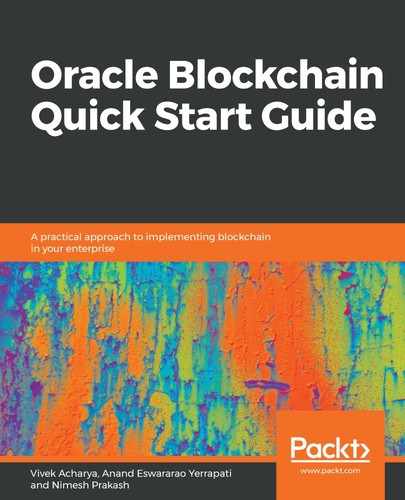Across the world, in the economical, legal, political, and institutional systems, the key elements are transactions, contracts, and documents. They dictate the relationship between countries, enterprises, organizations, communities, and individuals and, most importantly, they are perceived to offer trust. Interestingly, these have not joined the digital transformation to a greater extent and for the greater cause. So, what is the solution? Distributed ledgers and DLT, along with blockchain, offer the solution to such critical challenges. In this section, we will explore more about distributed ledgers and DLTs.
In a distributed ledger, there is no central authority or a central administrator. It is an asset database that is shared over the network, where each party on the network has an identical copy of the ledger. These assets can be financial, legal, and electronic assets. Changes to the value of these assets are reflected throughout the network, and each copy of the ledger is appended.
Many organizations, governments, and institutes use a central database of the ledger, which we discussed in the Centralized ledgers section. A centralized ledger needs a central authority to be trusted by transacting parties; however, in a distributed ledger, the need for a third party is omitted, which is one of the gravitational forces behind the attraction to DLT. Here, I have quietly used the term DLT because a distributed ledger can be pronounced as a shared ledger or a DLT, and they are one and the same.
What's disruptive about a DLT is that the ledger database is distributed, spread on all of the nodes or computing devices across the network, and each node has an identical copy of the ledger, where nodes update themselves independently. All of the participating nodes reach an agreement to establish a single truth (true copy) for the ledger through a process called consensus. Once a consensus is reached, the distributed ledger is updated automatically and the latest truth (true agreed copy) of the ledger is appended on each node separately. While reading this paragraph, you might think about the reconciliation process of banks to establish trust and an agreement on the ledger. With DLT, trust (reconciliation) and consensus (agreement) happen seamlessly and automatically.
What we just found out is that there is no central authority in the previous story to maintain the distributed ledger. DLT empowers systems to reduce the dependencies on various central authorities such as banks, lawyers, governments, regulatory offices, and third-party authorities. Distributed ledgers omit the need for a central authority to validate, authenticate, and process transactions. Transitions on DLT are timestamped and have a cryptographic unique identity, where all records in question are available for the participants to view, and this ensures that the verifiable and auditable history of the transaction is stored immutably.
In the decentralized distributed ledger, the transaction is replicated to the distributed ledger, which means all the participating nodes' copies of the ledger are appended; however, there is no central single database. It is the network that is decentralized. Such a system needs a decentralized consensus as there is no single point of contract, or single authority or party. Hence, to ensure trustlessness, consensus is a must. In a traditional database system, a single party acts on behalf of the transacting clients to modify the state of the system. However, in a distributed ledger, any party can record, and the protocols and algorithms govern the posting of transactions on the network's ledger.
The following table lists some of the differences between a centralized ledger and a distributed ledger:
|
Centralized ledger |
Distributed ledger |
|
Reconciliation is required (both internal and external). |
Reconciliation is not required; however, a consensus is required to reach an agreement. |
|
There's no restriction on DB operations. |
It's append-only. |
|
There's a single point of failure. |
It's distributed; hence, there's no single point of failure. |
|
There's a single point of contact. |
It's decentralized; hence, there's no single authority. |
|
There are third parties, middlemen, and gatekeepers. |
It's P2P. There's no central party, and appending to the ledger is governed by the consensus. |
|
Backup and disaster recovery are required. |
Resilience and availability increases as more and more participating nodes get to the network. |
|
Actions can be performed on behalf of someone. |
There's cryptographic authentication and authorization. |
|
NA |
It's immutable as the data added to the ledger stays immutable. |
|
NA |
There's direct interaction of the nodes, allowing initiation of direct transactions of assets such as currency, real assets such as land titles or documents, and so on. |
Equipped with the knowledge of ledgers, let's now dive into DLT and blockchain and understand the difference between them.
